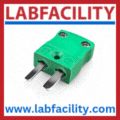
Posted to News on 20th Jun 2007, 19:50
Laser module helps to compensate for tube spring back
Unison has developed a laser measurement module for its all-electric tube bending machines that dynamically measures the accuracy of bend angles and automatically compensates for any errors. It allows manufacturers to bend tubing to the required angles without scrap - thereby overcoming the common problem caused by variances in the 'spring back' characteristics of materials from different metal production batches with minor differences in grain and temper. The new module is targeted at manufacturers of precision and high-value tubular parts, such as those used in shipbuilding applications.
The non-contact optical measurement system, known as the Breeze Angle-Sure, measures bend angles by monitoring changes in the reflection distance of two laser beams. In operation it takes a reference measurement from the straight edge of the tubing; then, after the bend is made, the system automatically commands the clamping die to move away - allowing the material to spring to its natural position - and takes a second measurement from which the actual bend angle is calculated.
Any difference to the programmed bend is displayed, along with a simple selection button that commands the machine to automatically re-grip the tube and apply an additional force to achieve the required angle. The system automatically calculates the required adjustment, taking into account the actual spring back characteristic of the tubing material from the first bend. It ensures that angles can be fabricated first time to accuracies of +/-0.2 degrees, and can be fitted onto Unison's Breeze family of tube bending machines for tubing diameters of 3inches/75mm and above.
Contractors
Unison developed the Breeze Angle-Sure measurement system to support a recent order from a defence equipment contractor. This manufacturer typically produces precision tubular parts in single or very small batches just-in-time, to support ship production. As parts are often fabricated from exotic alloy tubing that can cost as much as two thousand dollars per foot, the impact of scrap can be huge.
Alan Pickering of Unison states: "All-electric tube benders were developed to provide users with rapid and accurate software-controlled set-up between batches. This new measurement system further enhances the ability to create parts right-first-time, catering for users with applications demanding the highest precision.
"The impact of this new tool could be very significant for some manufacturers. If they use exotic alloy tubing, elimination of scrap could mean a return on investment measured in weeks. It could equally allow manufacturers to save money by changing their production methodologies, by moving from a batch production process to just-in-time fabrication for instance. Following trials, our first user has decided to dispense with a previous historical record system that documented the spring back characteristics of material batches."
Protractors
Without spring back measurement, some users who bend larger diameter pipe measure angles manually using a protractor - while the part is still clamped in the machine - as it is extremely difficult to replicate the positional configuration once a part is removed. This is a cumbersome process that is prone to human error. Unison's new measurement system, which self-calibrates itself before each measuring cycle, provides a highly robust automated system that is virtually maintenance-free.
Users also have the option of storing the results of each bending process to help optimise bending programs and to monitor the quality and consistency of supplied tubing materials.
Unison's new Breeze Angle-Sure system has been designed for workplace safety. The lasers used are category II, low-power types that will not cause eye damage unless stared at for an extended period. The beams are visible, and the system is further protected by automatic power-down when not in operation.






